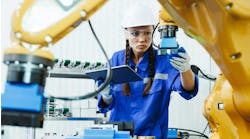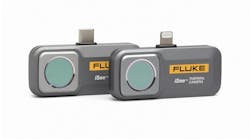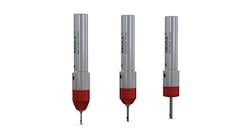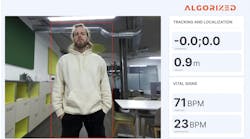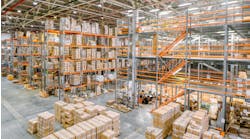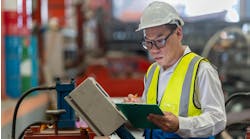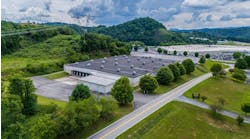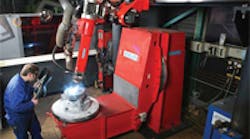At Johann Hay GmbH in Bad Sobernheim, Germany — which forges and processes parts for automotive engines, gears, and axles —maintenance and repair of forging dies is an ongoing requirement. To maintain forging dies in good operating condition, it is necessary at regular intervals to machine away damaged sections, and then to build them up again. Deposition welding is the usual technique for this task.
As deposition welding can take up to 15 hours for some large forging dies, the idea of automating this task was an obvious solution. But, for a long time all that was available were semi-automatic welding systems for rotationally symmetrical components. Help is available from Reis Robotics (www.reisroboticsusa.com), which has developed a software to control a deposition welding robot in a Cartesian-coordinate system.
The ROBOTstartV control system monitors the correct function of the robot, and controls are permanently monitored, with automatic shutdown at the first sign of deviation from the nominal specification.
Furthermore, it was designed to satisfy Reis Robotics’ Safe Robotics initiative, which permits an operator to enter the welding cell and safely observe the operation at close range. The SafeProduction function integrated in the ROBOTstartV control allows operators and the robot to occupy the same workspace, even when the robot is in automatic mode. In this mode the robot’s axle speeds are reduced to a more “humane” level and monitored on two channels.
This futuristic safety technology makes it possible for the user to observe the process close-up. He even can make immediate interventions, without having to halt the automatic operation.
These features were exactly what officials at Johann Hay were looking to find. Oliver Hammon, head of work preparation for toolmaking at Hay, and head of the automation project, knows how important it is to keep a close watch on the parameters for the welding job, so that if needed an operator can intervene and make adjustments. Hammon explains: “A skilled welder hears, sees, and smells the point at which he needs to carefully vary the performance.”
Based on the specifications of the system developed by Reis Robotics, Johann Hay acquired one of the new systems, and so far Hammon has not regretted the decision.
According to Hammon, the investment in the first robot system was amortized in just one year. In the meantime, a second system has been purchased and put into operation.
Among the advantages offered by the system are improved quality in the welding process, a more even material texture, and higher efficiency due to the need for less work by hand, and also an easier job for the operator.
Before the introduction of the new system this type of welding job had been done by hand, under ergonomically difficult conditions, and on parts preheated to temperatures of up to 450°C. Now, around 70% of the jobs previously done manually have been taken over by the robot.

